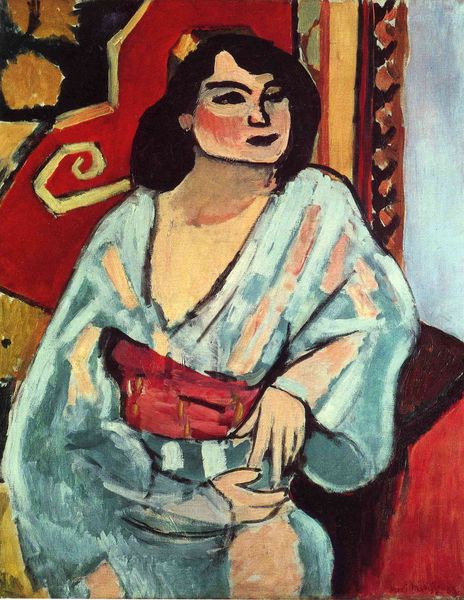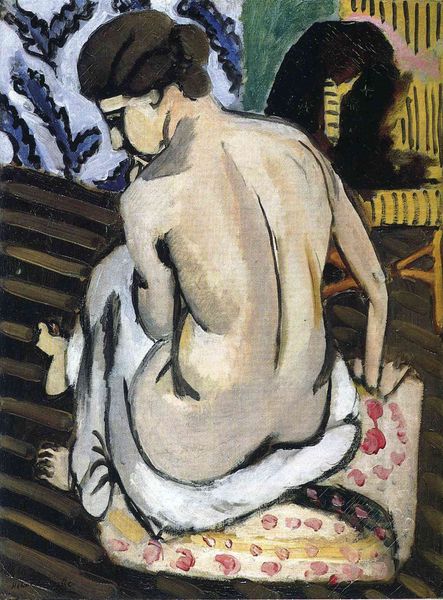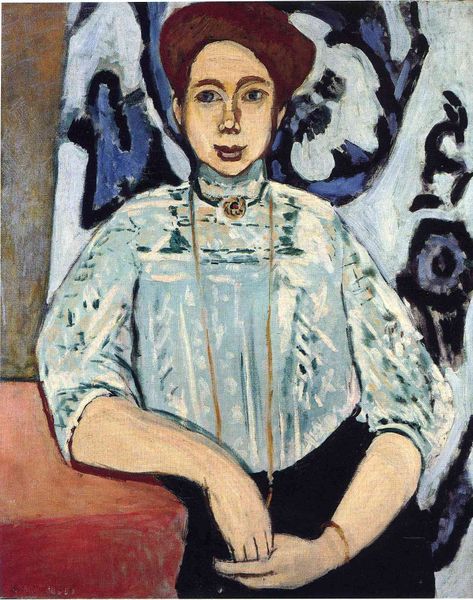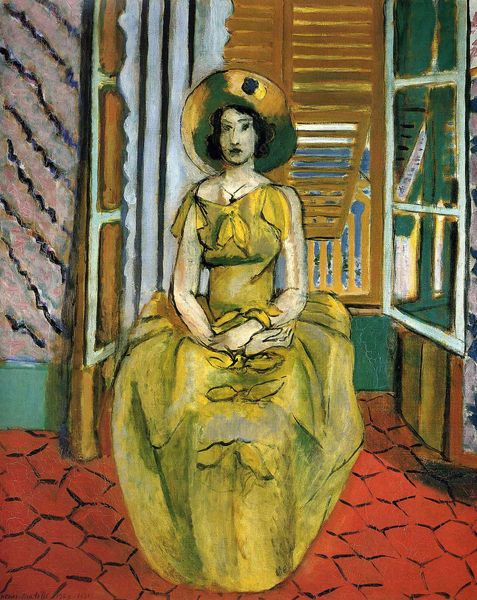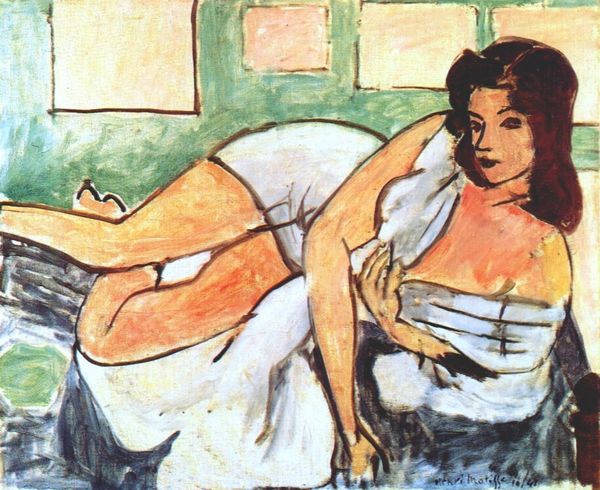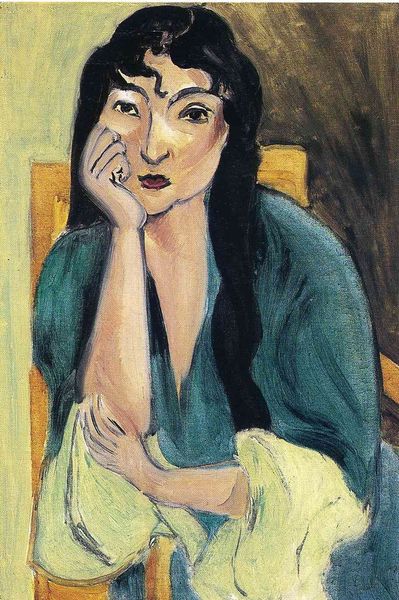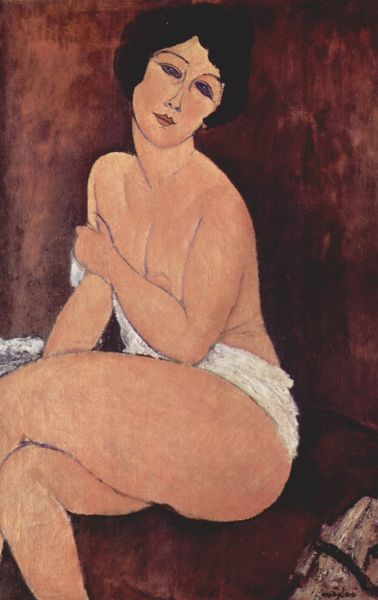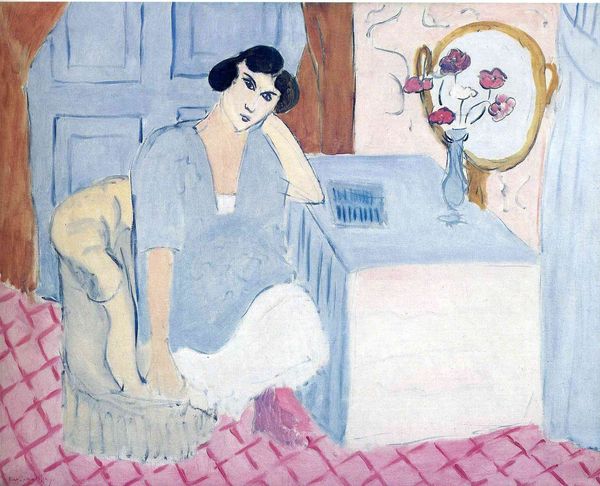
Copyright: Public domain US
Curator: Here we have Henri Matisse's "Reader on a Black Background," painted in 1918. The post-impressionist work, crafted with oil paints, resides in a private collection, so we’re very fortunate to have a viewing of this stunning piece today. What's your immediate take on it? Editor: Well, first off, she looks rather contemplative, almost wistful. The colors, especially the muted tones, create a quiet, almost melancholic atmosphere. It feels like a stolen moment of peace, but with a shadow lurking. Curator: Indeed. The materiality speaks to that sense of quietude as well. Note how the oil paint is applied in relatively thin layers in some areas, almost transparent, while other spots feature impasto, where the paint is applied thickly. This creates a dynamism on the canvas, pulling the viewer into engagement with both the surface and subject. Editor: It’s funny you say that because the rough brushstrokes also lend it a slightly unfinished feel, which adds to the sense of intimacy. You almost feel like you're intruding on her private space. I keep wondering what she’s reading! Something profound or something trivial? Curator: The art historical context is fascinating. Matisse made this during a time of war; the piece presents an escape from turmoil into this quiet interior world. One must ask, did the conditions of war contribute to an increase in artistic renderings of domestic life as a form of temporary removal from the real? Editor: Interesting point! Thinking about that war connection shifts everything, doesn’t it? And that black background—not a cheery choice, but it makes her white shawl really pop. Is there a link between color and political landscape in times of hardship? Curator: I think so, yes. It would require some archival delving, but perhaps a worthy venture in considering production amidst specific social climates. And one could ask, why a reader specifically? Why foreground a subject whose consumption is one of textual engagement? Editor: Exactly. Makes you think about how Matisse might have perceived books. Anyway, whatever is on her mind, it has my attention. It’s strange, isn’t it, how a single face painted nearly a century ago can still make us wonder? Curator: That tension is the magic. The layers of both paint and context give rise to so many rich interpretations. Thank you for shedding more insight into it with me today!
Comments
No comments
Be the first to comment and join the conversation on the ultimate creative platform.


